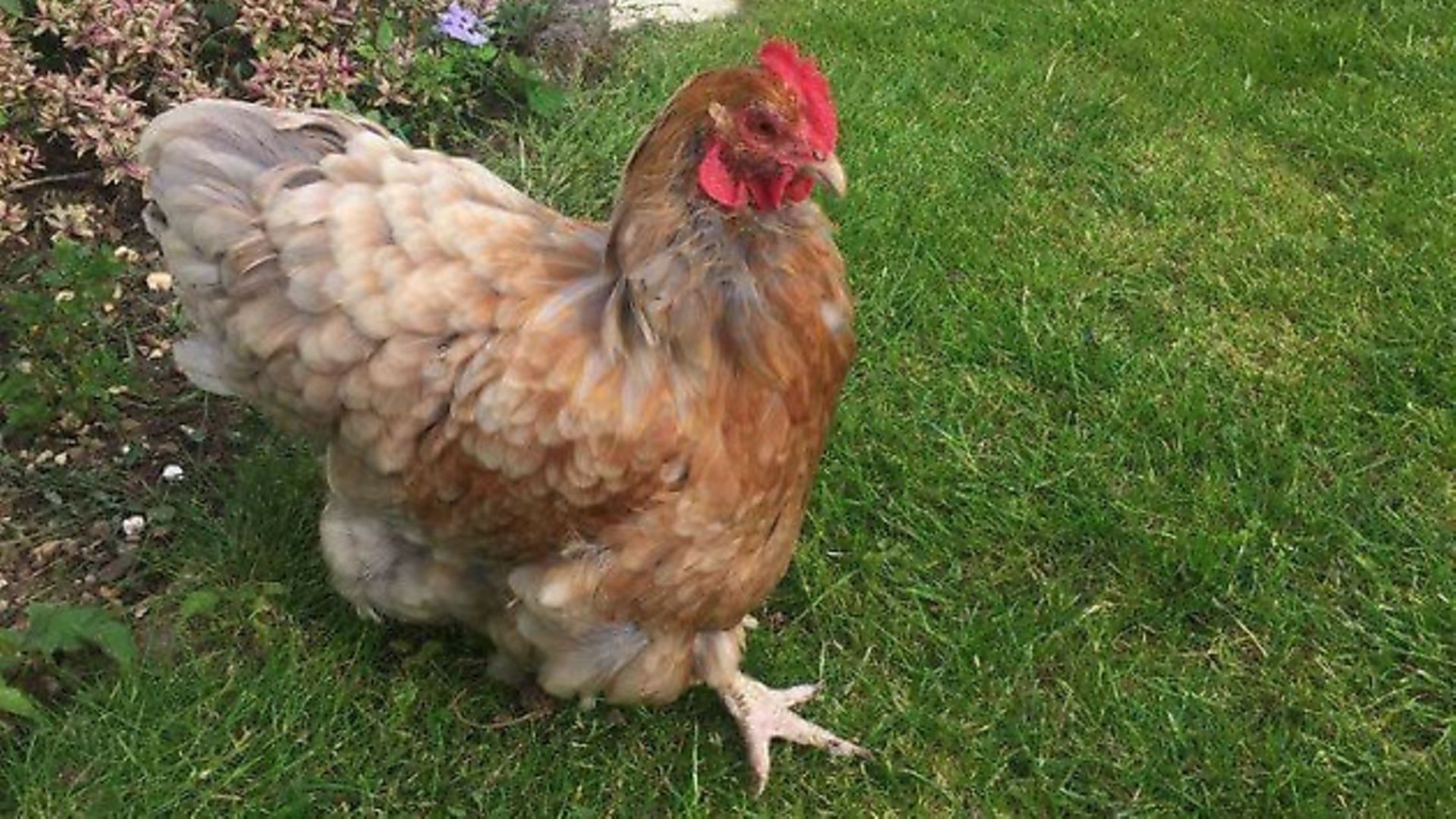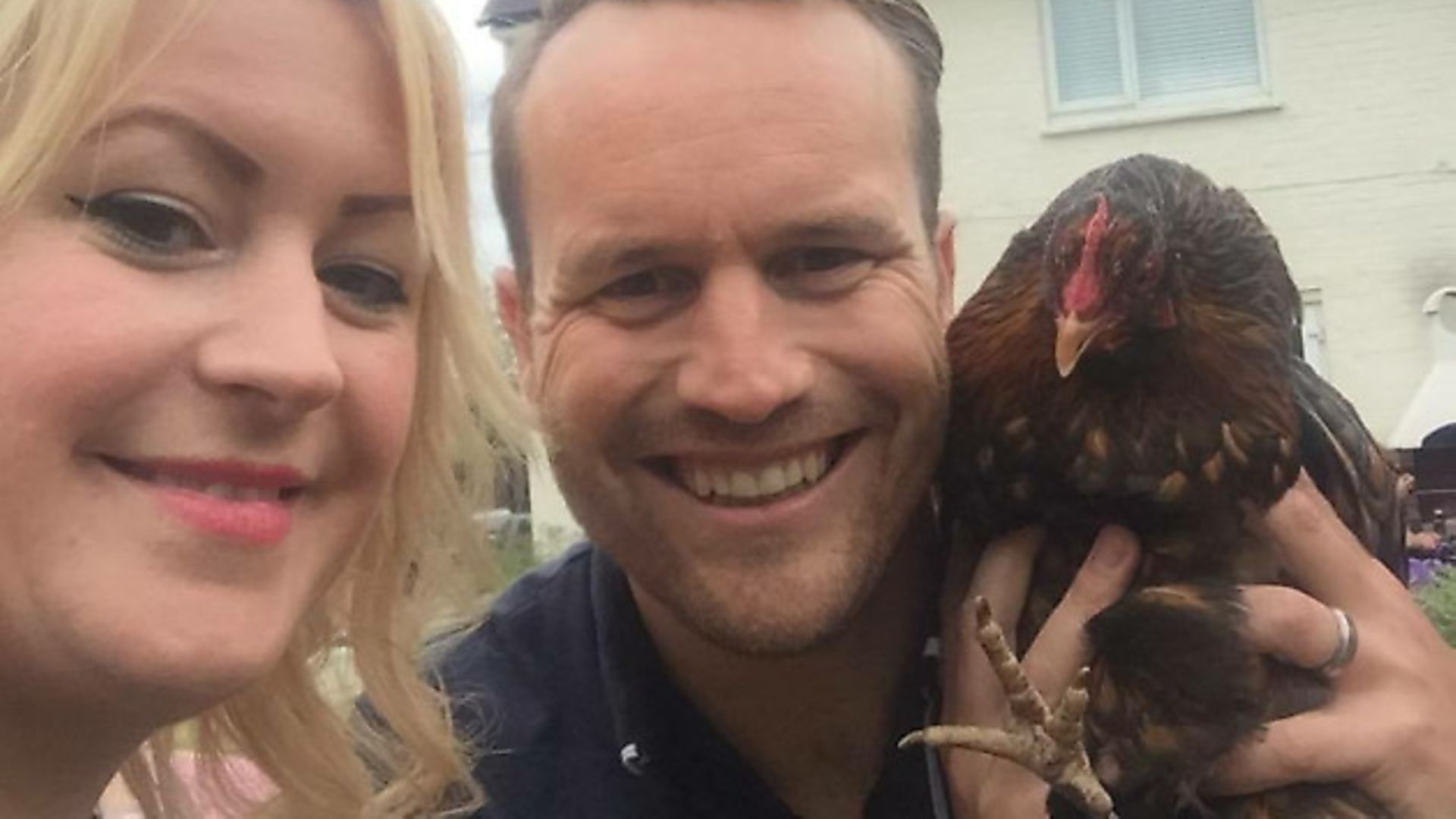The Tidball family, from Basingstoke, Hants, love keeping gold laced Orpingtons. They talked to Terry Beebe

Marie and James Tidball and their three children are typical backyard poultry enthusiasts who really enjoy their birds. Marie’s aunt always kept commercial chickens and, as a child, she used to get very excited when she was allowed to collect the eggs.
Marie and James wanted the children to grow up with some form of pet. They would sit down and watch the TV programme River Cottage on a Sunday evening, and be inspired by ‘the good life’.
Now, the chickens are part of the children’s education. Jakson, 5, loves to collect the eggs, Keston, 7, likes to ensure they have food and water and Molly, 14, will clean out the bedding and the poop trays. All of them help to remove the chicken poo from the lawn.
Marie and James both have busy jobs, and they love watching the chickens, finding them very therapeutic. The birds are allowed to free range when they are at home and kept in a secure, fox-proof pen when they are at work.
Both would like to breed and show the birds, but given their work commitments they sensibly keep the number of birds to a manageable number.
What is your favourite breed?
We have two favourite breeds, the gold laced Orpington and a variety that was created by the person we bought the birds from – the blue salmon Orpington.

What first attracted you to that breed?
The gold laced Orpington is so elegant and pretty. They are also very funny and entertaining to watch. We call one Black Betty as she follows us around everywhere. She also makes a different noise when she is in the house just to let us know she is inside; we consider her to be super intelligent.
We also have Belina, a blue salmon Orpington – she is very beautiful. When we first saw her we just fell for her. She has gorgeous pastel and powder tones. She is a proper chicken who keeps herself to herself and loves to sunbathe; she waddles around and always warns the others if anything has changed, so is a sort of a guardian angel.
Where did you get them from and how much did we pay?
We bought them from Keith’s Orpington Poultry (www.keiths-orps.co.uk) in Bracknell, Berkshire. He is a fantastic breeder and has created many of his own breeds and new colours, such as the Blue Salmon. We paid £25 per chicken when they were around 10 weeks old.
What is it that appeals to you most?
They are easy pets to keep and are very entertaining; they are fantastic with the children and give them some responsibility.
The children love collecting the eggs and carrying out the little tasks for the birds around the garden.
Do you have a fond memory of a particular bird?
Betty is the entertainer of the family. She is also very cheeky. She enjoys joining the boys, especially while they eat their dinner in the garden. Betty will often jump up on the side of their chairs. On one occasion, she decided to steal Keston’s garlic bread when it was in his mouth, and they ended up playing tug-of-war with it. Jakson found this hysterical!
What is the breed like as an egg producer?
The girls are good layers, giving around 250 eggs a year. The only thing is that they always go broody at the same time. I really do not like buying eggs from the shops – there is nothing better than having them fresh.
Are there any particular challenges in keeping the breed?
The gold laced are very little trouble and just need the general day-to-day care as with all chickens.
Have you bred from them?
No, although I would like to start. At present, with work commitments, I don’t think we have enough time. Maybe it is something for the future.
Have you ever shown them?
Out of all the birds, we think that Betty is the only one we could show, as many of the others are non-standard colours. Again, this is something we could consider for the future.
Do you have any tips for others considering keeping this breed?
It is, of course, important to make sure they are kept insect-free, especially around the vent area.
I would say enjoy and handle the birds as often as possible. Betty is the tamest of all our birds because we always handled her and sat her on our laps. The others are not quite as tame and can be more difficult to catch.
TERRY SAYS
The Orpington breed is named after the town of Orpington, Kent.
The breed is an excellent layer and was originally created to be a dual-purpose breed. They are a large sized breed with a soft appearance, rich colours and a very nice profile. It has increased in popularity as a show bird rather than a utility breed.
The hens are good mothers and often become broody, which can sometimes be a problem, especially if you want them to produce eggs.Orpingtons are not good flyers due to their size.
Ideally, the bird’s carriage needs to be bold, upright and graceful, the body needs to be deep, broad and cobby, the breast deep and rounded with small wings that are carried close to the body; the breast is deep, well rounded, not flat. The wings are small, nicely formed and carried closely to the body, the ends almost hidden by the saddle hackle. The tail is rather short being compact, flowing and high, but by no means a squirrel tail. The head is small and neat, with a strong curved beak. Orpingtons have a small single comb with even serrations. The neck is medium in length with a full hackle, the legs are short and almost hidden by the body feathers and the feet have four toes that are straight and well spread.
BREED CLUBS
The Orpington Club
Mr A Richardson
Catterall Hall Cottage,
Catterall Lane, Catterall,
Preston PR3 0PA
Tel: 01995 601772
richardson755@btinternet.com
http://www.theorpingtonclub.org.uk
The Buff Orpington Club
Mr P E Smedley
Leckby House, Flaxton,
N Yorks YO60 7QZ
Tel: 01904 468387
Philipsmedley54@gmail.com
Image(s) provided by:
Archant
Archant







